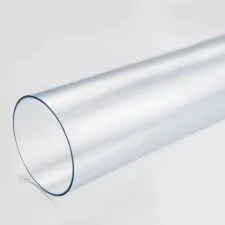அக் . 16, 2024 18:45 Back to list
waste pipe fittings
Understanding Waste Pipe Fittings A Comprehensive Guide
When it comes to plumbing and drainage systems, understanding the components and fittings that make up these systems is crucial. One of the less glamorous yet critical components is the waste pipe fittings. Waste pipe fittings are essential for ensuring that wastewater from various sources flows efficiently and safely to sewage systems or septic tanks. In this article, we will explore the different types of waste pipe fittings, their applications, and tips for installation and maintenance.
What Are Waste Pipe Fittings?
Waste pipe fittings are specialized parts used in plumbing systems to connect various sections of pipes that carry wastewater away from sinks, toilets, showers, and other wastewater sources. These fittings are designed to facilitate the smooth flow of water while preventing leaks, blockages, and backflow issues. They come in various shapes and sizes, including elbows, tees, couplings, and traps, each serving distinct functions in a drainage system.
Types of Waste Pipe Fittings
1. Elbows These fittings are used to change the direction of the pipe. They typically come in 90-degree or 45-degree angles, allowing for versatility in routing waste pipes around obstacles.
2. Tees A tee fitting has three openings and is used to connect three sections of pipe; one main line and two branches. This fitting is essential when branching off from the main drainage line.
3. Couplings Couplings connect two sections of the same diameter pipe, enabling the extension of pipe runs or the repair of broken sections. They can be either regular couplings or flexible ones that can accommodate slight misalignments.
4. Traps Traps are critical fittings that hold a small amount of water to create a seal, preventing sewer gases from entering living spaces. Common examples include P-traps and S-traps, found underneath sinks and toilets.
5. Adapters Adapters allow different types and sizes of pipes to connect, ensuring compatibility throughout a plumbing system.
Applications of Waste Pipe Fittings
Waste pipe fittings are predominantly used in residential and commercial plumbing systems. They are essential in kitchen and bathroom installations, where multiple fixtures are often connected to a single drainage system. Understanding their application is vital for any plumbing project, whether you are renovating a bathroom, installing a new kitchen sink, or managing a public restroom facility.
waste pipe fittings

Installation Tips
Installing waste pipe fittings correctly is crucial for ensuring a proper drain system. Here are some tips
- Follow Local Codes Always adhere to local plumbing codes and regulations when installing waste fittings. Failure to comply can lead to leaks or even fines.
- Use the Right Tools Have the necessary tools on hand, such as pipe wrenches, hacksaws, and pipe cutters, to facilitate a smooth installation process.
- Choose the Right Material Waste fittings come in various materials, including PVC, ABS, and metal. Choose the material based on your specific needs, taking into account durability and compatibility with existing pipes.
- Seal Connections Use appropriate sealants or Teflon tape when connecting fittings to prevent leaks. Ensuring tight connections is critical in maintaining a leak-free system.
- Test the System After installation, it’s important to test the system by running water through it to check for leaks or inefficiencies.
Maintenance
Regular maintenance of waste pipe fittings is essential for prolonging their lifespan and efficiency. Check for signs of wear, leaks, or blockages periodically. If you detect slow drainage or unusual odors, it may indicate a problem with your waste system. Regularly cleaning traps and ensuring they are filled with water can help maintain the necessary seal against sewer gases.
Conclusion
Understanding waste pipe fittings and their importance in plumbing systems is crucial for homeowners and professionals alike. By selecting the right fittings, following proper installation practices, and maintaining your system, you can ensure efficient wastewater management in your home or business. Whether you are tackling a small plumbing project or working on a larger construction site, knowledge of these fittings will help you create a reliable and functional drainage system.
-
Premium PVC-M Water Supply Pipe - Durable & Efficient
NewsAug.02,2025
-
Premium PP Welding Rod: GPT-4 Turbo Enhanced
NewsAug.01,2025
-
HDPE Drainage & Irrigation Pipe - Durable, Efficient Solutions
NewsAug.01,2025
-
Premium PVC Transparent Pipe: Durable & Clear Solutions
NewsJul.31,2025
-
High-Quality UPVC Electrical Pipe for Safe Wiring Solutions
NewsJul.30,2025
-
Premium PVC Pipe Fitting Supplier – Durable & Leak-Proof Solutions
NewsJul.30,2025

